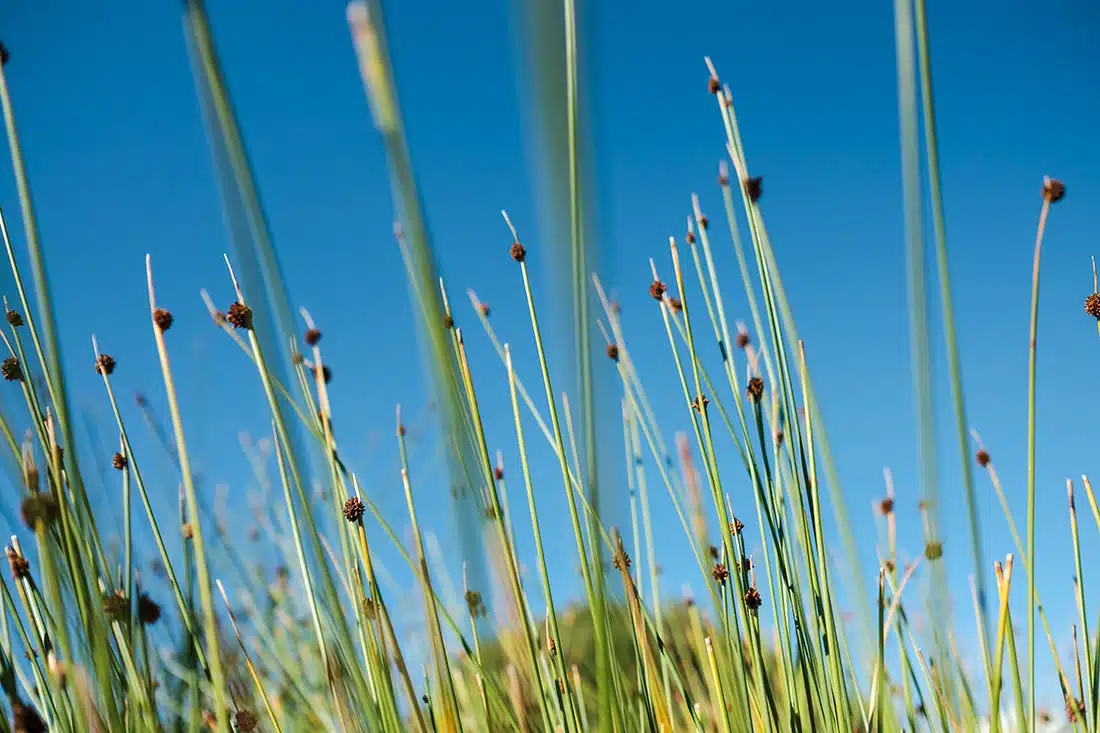Designing a low maintenance garden is not just about reducing the burden of labour on busy households; it’s also about creating a space that flourishes with less effort, allowing you to fully enjoy its beauty without the constant upkeep. Clients frequently come to TDL requesting low maintenance garden designs and builds. In this article we delve a little deeper into what that means, and how specific design choices can significantly reduce maintenance needs while enhancing the overall appeal of your outdoor space.
1. Strategic Plant Selection:
Going for a low maintenance planting scheme means hardy, slow growing species, and fewer species overall. Opting for slow-growing plants like Carissa and Bay Laurels means less frequent pruning and trimming, reducing the time and effort required to maintain their shape and size. Limiting the variety of plant species present in your planting scheme also simplifies care by eliminating the need to cater to diverse watering, fertilizing, and pest control requirements. This doesn’t have to compromise the visual appeal of your garden, but if you’re designing a space with TDL and looking for easy care, you may be advised that some of your preferences aesthetically will necessitate higher upkeep. Going for a low maintenance garden can also mean compromising on how quickly the space matures, slower growing selections will require less care but will take longer to mature. This can be offset by investing in more mature stock, potentially increasing the up-front costs of establishing your garden.
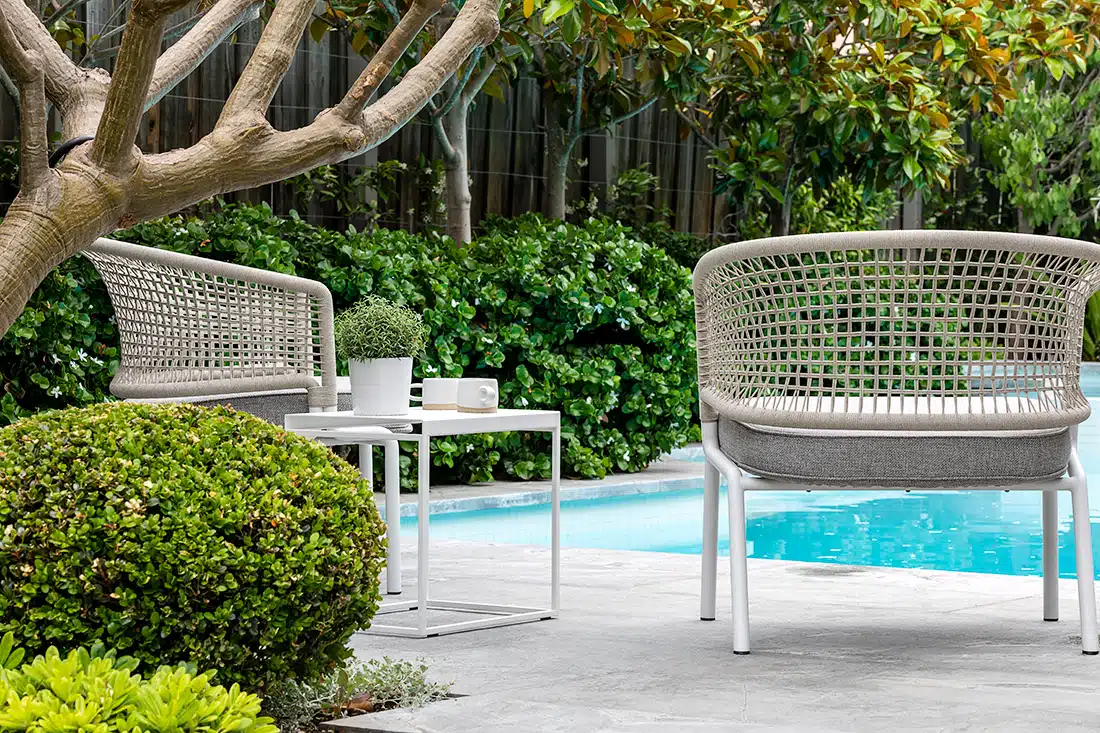
2. Thoughtful Hardscaping:
Choosing solid pavement options such as stone or aggregate significantly reduces weed growth by eliminating gaps and spaces where weeds can take root. This reduces the need for regular weeding sessions, and the risk of pavements subsiding or migrating, saving both time and effort, and potentially cost. If your garden includes decking, you can reduce the maintenance needs of the space by selecting a high-quality composite material over natural timber. Natural timber is beautiful, but if you know you’re not going to be able to keep up with its care, there are a number of high-quality composite options that offer the timeless beauty of natural timber without the ongoing maintenance demands, such as staining and sealing. This durable alternative maintains its appearance with minimal upkeep.
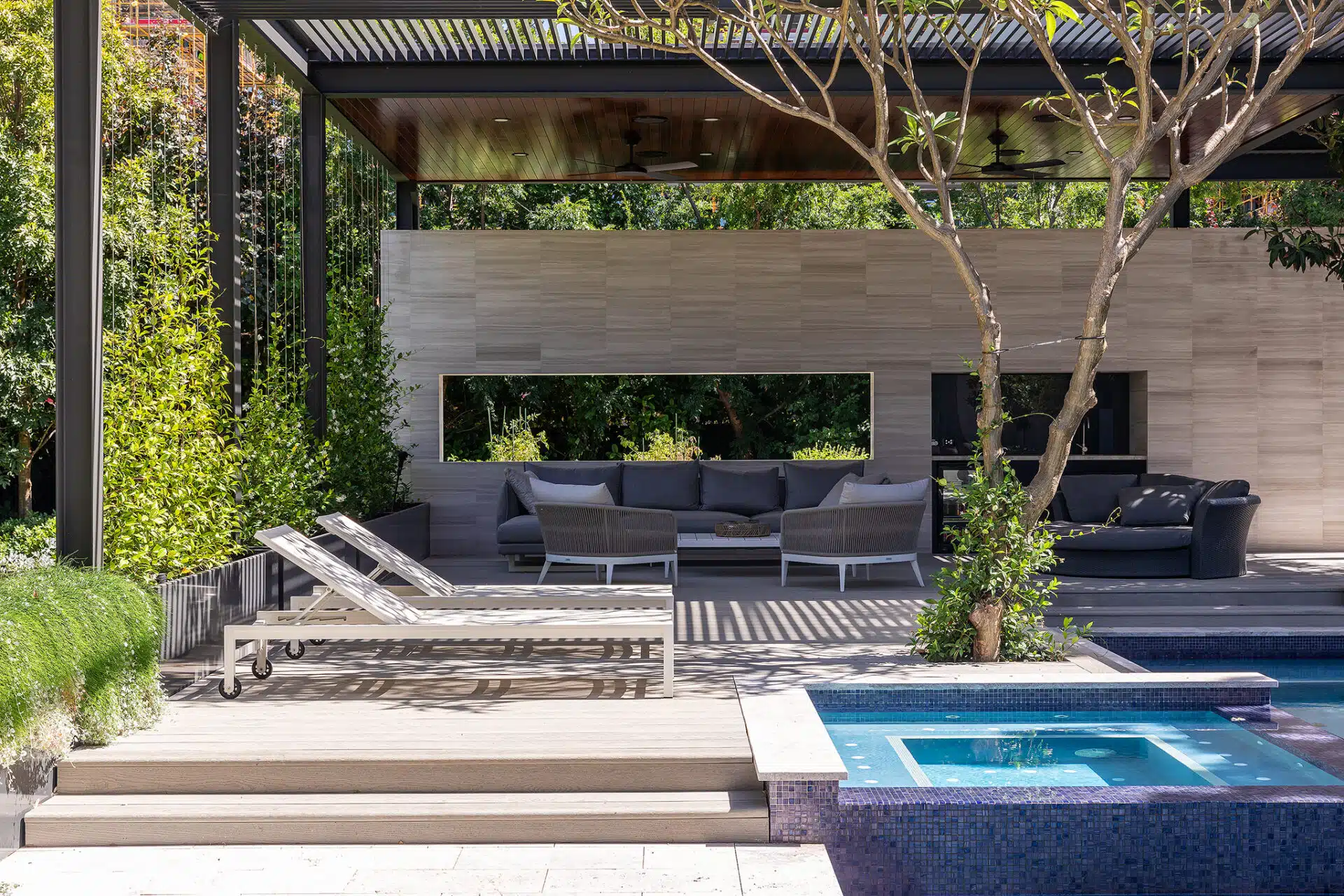
3. Efficient Irrigation Systems:
Investing in a well-designed reticulation system ensures efficient watering, reducing water waste and promoting healthier plant growth. TDL generally recommends dripline systems for garden areas, delivering water directly to the roots where it’s needed most. These efficient, automated systems minimize the need for manual watering and monitoring and reduce water waste. Ensure your proposed pot locations are included in your preliminary landscpae planning, extending reticulation feeds to potted plants or utilizing self-watering pots provides consistent moisture levels, reducing the frequency of watering and ensuring plants remain hydrated even during periods of absence or neglect.
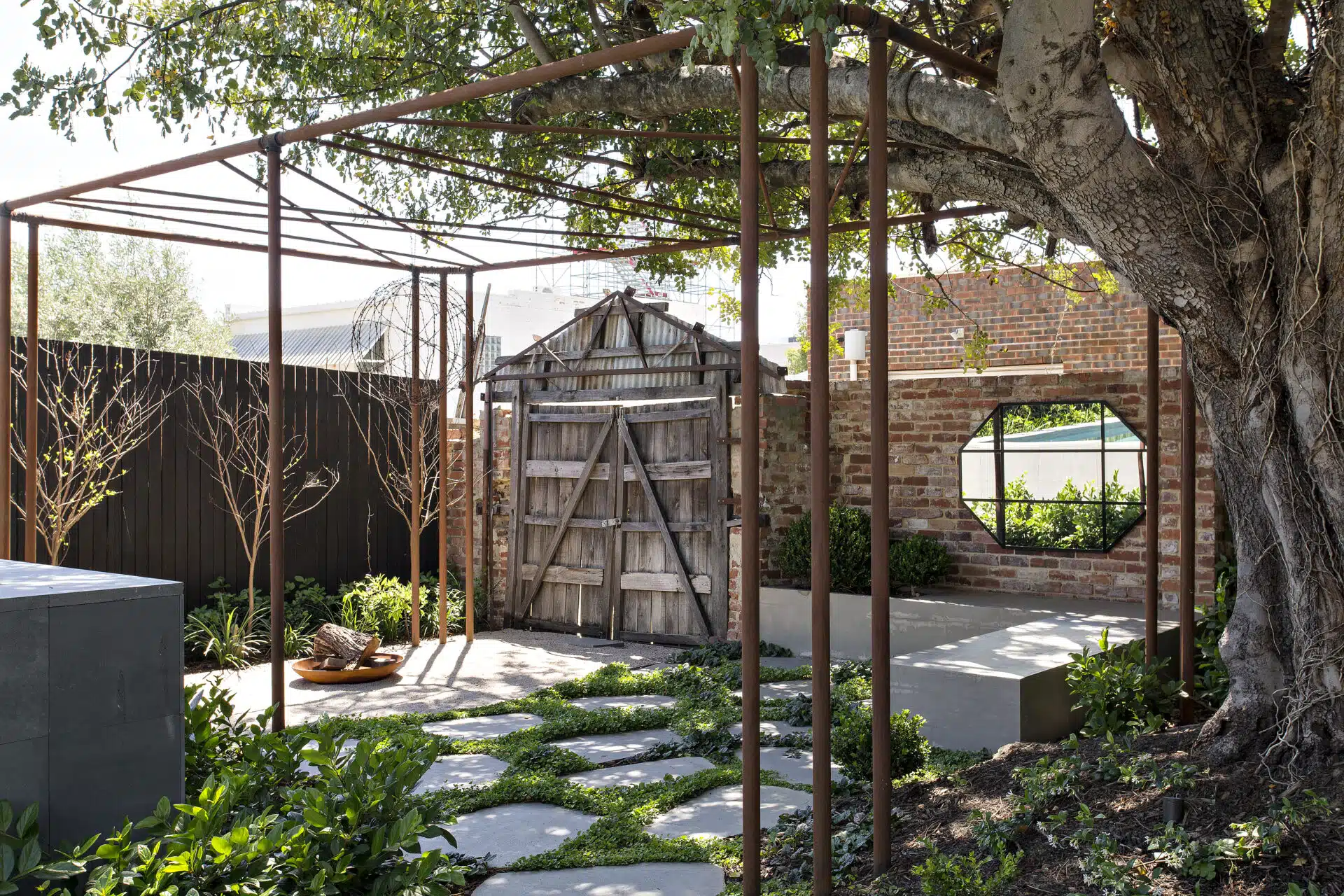
4. Planning for the effects of water:
While water is absolutely necessary for gardens, it is the enemy of built form. Careful landscape planning can offset the risks of water staining your built forms and surfaces. Self-watering pots offer a convenient solution for areas where traditional drainage isn’t feasible, such as paved surfaces. By providing a reservoir for water storage and controlled release, these pots minimize the need for frequent watering and prevent soil stains on your hard surfaces, keeping your outdoor space clean. Dripline systems in garden beds mean there won’t be water spraying on walls, windows or glass pool fencing immediately adjacent, however, it’s worth noting that turf areas are best watered with spray systems. This means that if you have grass located adjacent to glass, you may find your retic leaves water marks on the glass. One recommendation we often make in these situations is to separate turf and glass with dripline watered garden beds. This reduces the effects of sprays. Offsetting sprays from hard surfaces is particularly beneficial where bore water is in use.

5. Strategic Tree Placement:
Carefully selecting tree species with minimal leaf drop or large, easy to collect leaves reduces the accumulation of debris on paved surfaces, minimizing the need for regular cleaning and maintenance. Placing trees strategically away from paved areas further reduces the impact of falling leaves, fruit and branches on outdoor surfaces.
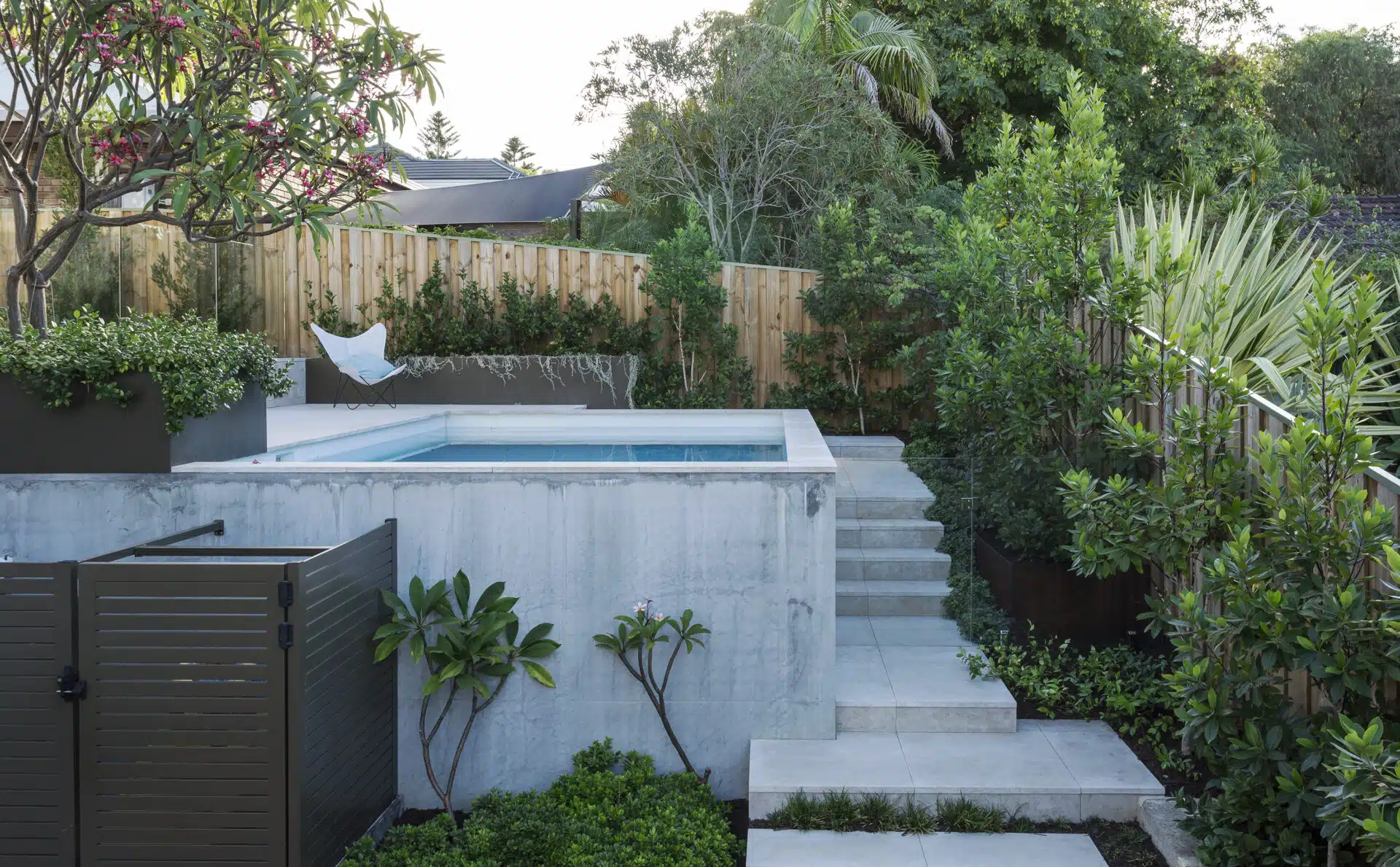
6. Reducing or eliminating turf from the design:
Replacing traditional turf grass with alternative groundcovers, planting, or informal surface finishes can not only conserve water but also reduce maintenance demands. While not necessarily an appropriate alternative to turf in all cases, there are a number of low-maintenance groundcover alternatives available that demand less mowing, fertilizing, and watering, allowing you to enjoy a lush green landscape with reduced effort.
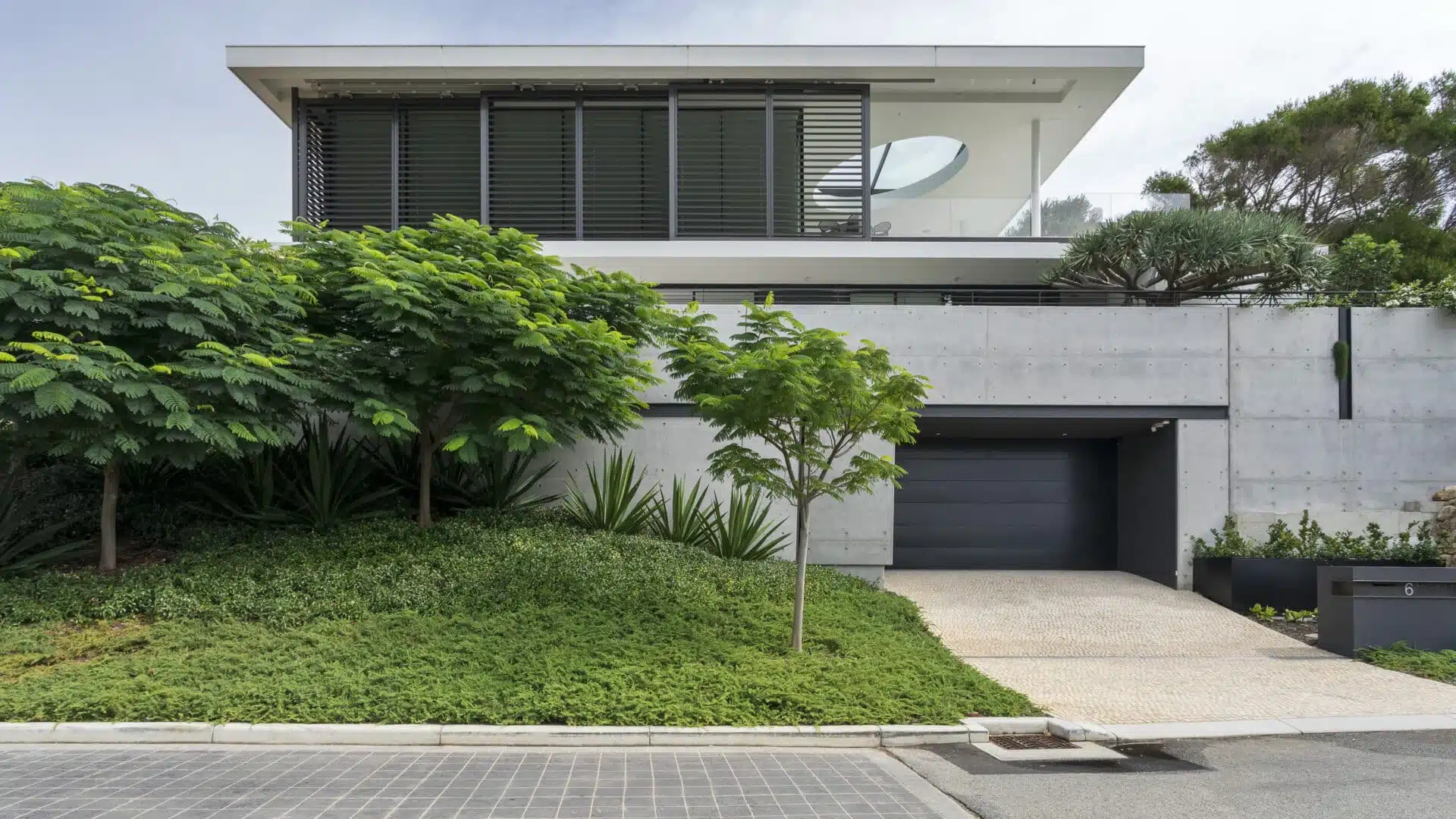
7. Mulching Beds and Borders:
It may sound counterintuitive, but this piece of occasional maintenance can save a lot of tedious weeding and care in the long term. Mulching garden beds and borders helps retain moisture, suppresses weed growth, and regulates soil temperature, reducing the need for watering and weeding. Organic mulches also enrich the soil as they break down, promoting healthy plant growth and reducing the need for fertilizers.
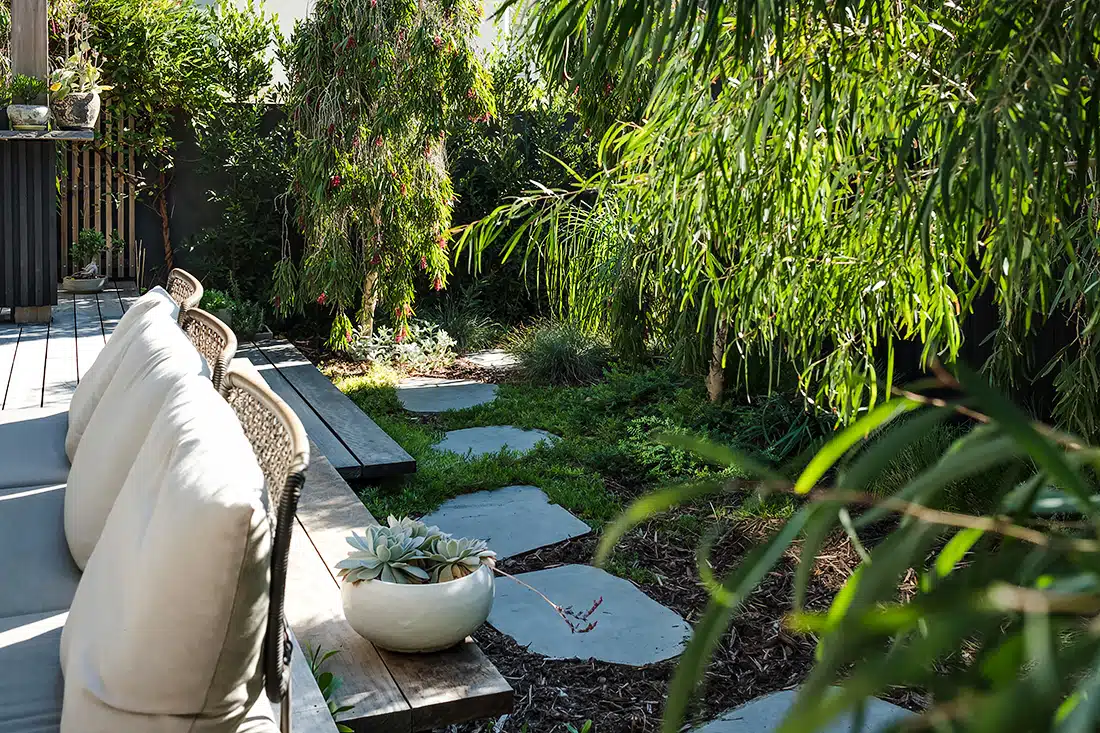
By incorporating these design principles and embracing innovative solutions, you can create a low-maintenance garden that thrives with less work, giving you more time to relax and enjoy the beauty of your outdoor sanctuary.

